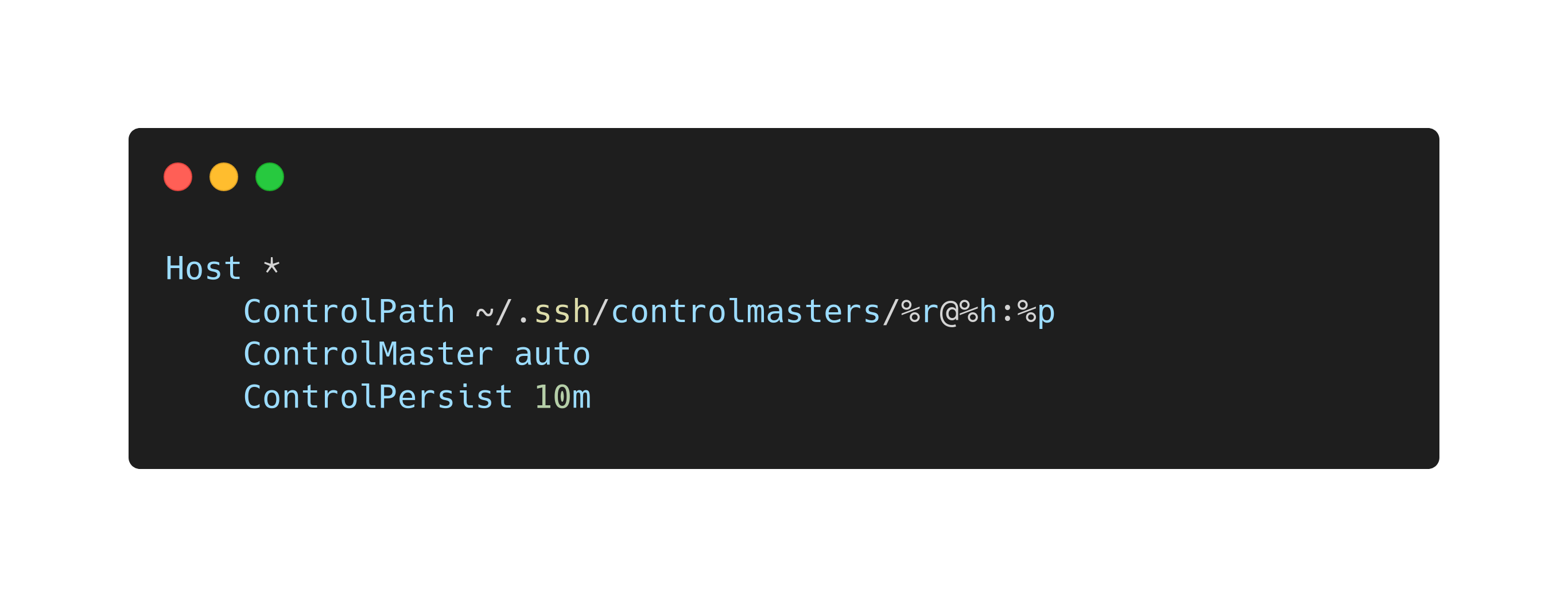Random discoveries 1
A collection of small hacks which I discovered recently.
This time: ssh ControlMaster and the synergy of dataclass and @cached_property in python.

ssh ControlMaster
I use remote SSL tunnels a lot in my daily routine for browsing, access to HPC, file sync, and backup.
Unfortunately, ssh, scp and rsync do take a few seconds to establish a new secure connection.
It becomes especially annoying if you use scp to copy files as a part of a loop for example.
But you can fix it using ControlMaster.
ControlMaster is a mechanism to share one secure connection across multiple applications.
To activate it, I have the following in my .ssh/config.
Host *
ControlPath ~/.ssh/controlmasters/%r@%h:%p
ControlMaster auto
ControlPersist 10m
The above configuration means that secure sockets will be created inside my .ssh/controlmasters folder (note that it has to be created separately).
ssh, scp and other applications will first check if a secure connection to the desired host is already present in the folder.
If yes, they will re-use it in parallel to other programs.
If not, they will create a new one.
ControlPersist specifies the timeout for closing idle connections.
This way, my remote manipulations become almost instant (including auto-completion in scp and rsync).
A small downside is that broken uplink will lag ControlMaster sockets: you might need to cleanup the corresponding folder once the uplink is restored.
python dataclass + @cached_property
I enjoyed combining these two modern patterns recently for read-only classes with many attributes.
@dataclass(frozen=True)
class Dog:
name: str
head: float
body: float
tail: float
@cached_property
def size(self):
return self.head + self.body + self.tail
@cached_property
def __str__(self):
return f"{self.name}({self.size})"
This pattern has many advantages; to name a few:
- Simple logic: you know exactly that there is nothing fancy about the constructor and it is straightforward to implement copy, serialization, and other standard class methods.
- Zero maintenance cost for dependent attributes: they are defined in compact isolated blocks of code, they are cached and they are not evaluated unless necessary.
- Concise code structure: there is a clear distinction between independent and children attributes. The class is literally a computational graph that can be traced over rather easily.
I recently switched to these patterns in my miniff package which I develop to model nanosystems.